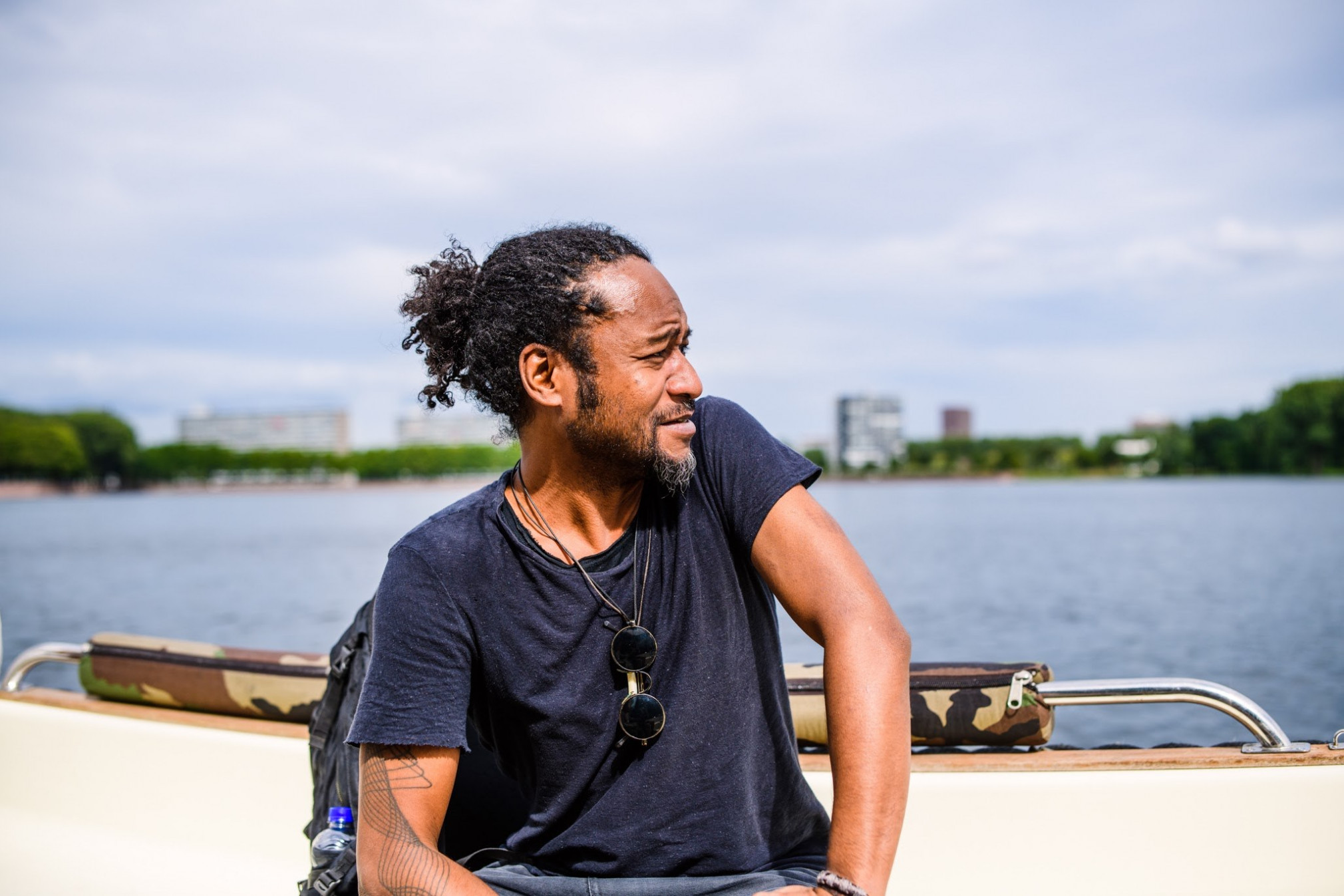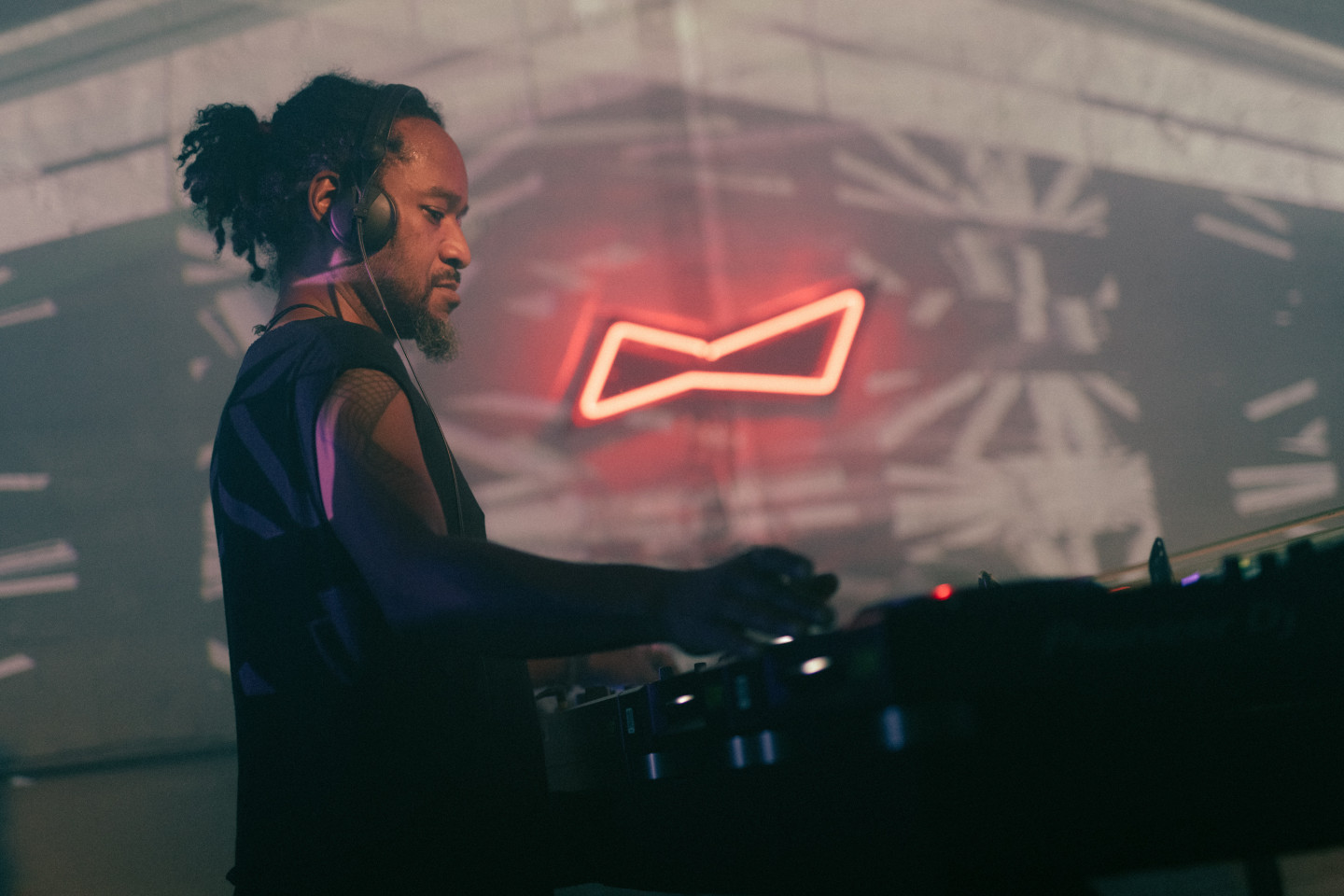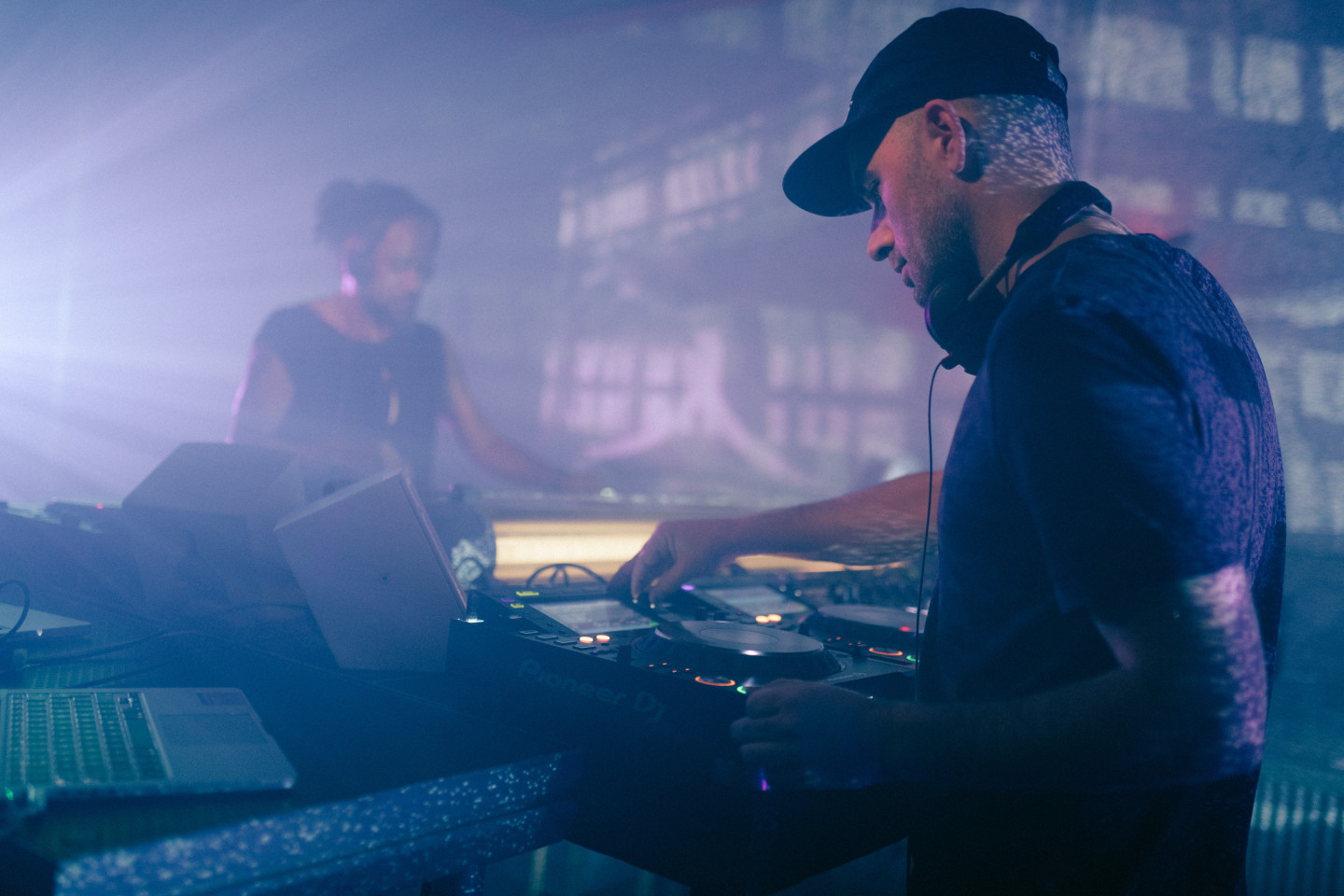You may know him as STERAC, Sterac Electronics, Ignacio, Parallel 9 or another of his several other aliases - Steve Rachmad is one of the most prolific and enduring electronic artists of the Dutch underground. Even with a career spanning 36 years, amidst a global pandemic, he is still finding new avenues with which to express himself and explore sound.
Words by Christopher Paul
Despite lockdowns and restrictions putting nightlife on hold, Steve Rachmad is still managing to stay busy, adopting a positive attitude to a change in the times, choosing to see it as an opportunity to grow in new and unexpected directions as an artist. We spoke to him about his recent collaborative experiences, both as a DJ and a live performer, as well as his most recent album “The Beauty and The Sea”, a deep and emotional electro meditation based on written work “The Outlaw Ocean” (2019). The book, written by Pulitzer Prize-winning investigative journalist Ian Urbina, explores the vast, often unseen, violent and lawless underworld of international waters. Steve talks about his approach to composing the album, and the personal impact it had on him.

During the Dekmantel Connects streaming event, you performed a special face-off set with fellow Dutch artist Deniro under the STERAC alias. How long have you and Deniro known each other?
We’ve known each other quite a while actually, I met them all together, the Dekmantel boys, with Thomas and Casper. They were all friends when they were really young. Dimi Angelis was throwing these illegal raves, and they used to attend those as well. I think the boys were between 15 and 17 at the time, when we met. It was always a small number of people, never really a completely-full kind of thing. Just like-minded people who came for good music. There were no rules saying that it had to be commercial music, so at those events, we all took our deepest stuff out, it was just purely, let’s say, the Jeff Mills Axis and the Rob Hood Stuff. It was really special, it didn’t matter if it was busy or not, we were all having fun with music you generally didn’t hear at other parties.
"Dimi Angelis was throwing these illegal raves, and they used to attend those as well. I think the boys were between 15 and 17 at the time, when we met. It was always a small number of people, never really a completely-full kind of thing. Just like-minded people who came for good music."
Over the last decade, there’s less and less of that going on around Amsterdam.
I guess because of increased regulation, and of course The Netherlands is already quite small, a lot of locations are being turned into living spaces, and so it’s not possible in those areas anymore; people complain more quickly, too close to other neighbourhoods and so on.
Indeed, It’s a lot trickier than it used to be
Yeah, we don’t have so much free space to begin with, at least, not a lot of free space without houses around. Take Germany; if you fly over, you see so much forest, sometimes the closest building is really far out. I think out there, there’d be more possibilities for doing some funny illegal stuff, in a way that you don’t bother anyone because no one else can hear it, which is what’s quite difficult here.
Would that period of time have been in the early 2000’s?
It would have been around the 2000’s, indeed. Quite a while ago, by now. It’s almost 20 years later, time flies! Funny to see the progression in people, and where they are at this point in time.
In order to respect health and safety, you and Deniro were positioned opposite each other, playing on separate setups. How did it feel to perform in such an unusual configuration?
In general, I’m not a big fan of it, I prefer a single shared setup; it’s easier to communicate, easier to anticipate, and a bit less messy. But I have to say, looking back, it was nicely built up, especially for people at home to see, definitely not like any other back-to-back I’ve seen.
It gave me a bit of a sound-system battle vibe.
Yeah, it was a bit messy because there were so many things going on, we each had two mixers and four decks, and there were certain rules we had to keep in mind. For instance, I’d always forget to close his fader, and if I didn’t close it I’d hear his pre-cue channel, and if I didn’t open it for him he wouldn’t be able to mix in because he couldn’t cue my record. That took a bit of getting used to, but ultimately it all worked out fine.
Another broadcasted event you took part in recently before that was a performance on STOOR with Speedy J. I believe that was your first time performing a live hardware set, right?
It was. Before that I was never really interested in performing live.

What encouraged you to take that chance this time around?
We’re in times where a lot of things are different, many things are happening (or not happening), and Jochem approached me about doing a performance. I had never tried it, and in a way was not so interested, but it was also at a period where I was already into doing things differently than I would normally, so I immediately just said yes, “Let’s just jump into it.” I didn't tell him that I had never done it, he only found that out a couple of days before! So that was also pretty exciting for him. My problem with playing live is that I never want to have to prepare, and lose too much time from doing studio work. Most people that I know who play live often say “my studio work is on hold because I have to prepare my live set”, that’s the main reason I was never really into it. I approached this thing with Jochem in such a way that I could do things on the fly, on the spot, without any practice or preparation. The machines I used were the ones which were easiest to handle, with that thought in mind.
What was the handiest tool for you?
I used an ARP Sequencer. When using a more modern sequencer you need to rely on pre-programming things to get the most out of them. I didn’t want to do that, I wanted something I could easily program on the spot, direct and easy to work with, no sub-menus. The ARP is a sequencer made up of 16 sliders which you can actually see and feel, so you immediately see what you’re doing to whatever it’s connected to. Some sequencers have sub-menus, and in order to change notes you need to tap an extra button and hope that it’s the right note (laughs). With these sliders everything is done on the fly, you can set something up quickly, see if it works, and if it’s nothing you can just slide it down or up to see if it works again. It makes coming up with ideas really quick for me, maybe simple ideas, but very effective.
So in this case, immediacy was an important part of the selection.
Yeah, so that I could approach it sort of like a DJ set. I had a mix going to my headphones, similar to when you sync up a record, only now I was using it whilst Jochem was doing something; to create a sound or prepare a new beat, make sure something came in at the right moment, not off-key or off-sync. In that sense it felt sort-of like a studio jam, I guess that’s why it went so fluently.
Are there any other artists you might be interested in doing this sort of thing with?
With everything shut down, I’ve had some time to think about it. I managed to do another performance with Colin Benders and Speedy J on Tivoli’s Andermaal livestream, it should be available for viewing in May. I would love to try it with people like The Advent, Lady Starlight, Luke Slater and Jeroen Search, people who can anticipate with similar ideas. It’s not that they all have to go “on the fly”, but I will. I’d only like to do it together with someone else, not on my own. The fun thing for me here is that someone creates something that I can add something to, and we can go on from that point, instead of doing a back-to-back thing where we’re just bouncing our old “hits” back and forth. I noticed that it’s nice to anticipate what I’m hearing, and what someone else is doing, adding things and doing it together. The Jam with Jochem was very inspiring, but felt too short, it went a lot faster than I expected. Even just with him, there’s still a lot to explore. I’m looking forward to trying it out on a stage.
"The fun thing for me here is that someone creates something that I can add something to, and we can go on from that point, instead of doing a back-to-back thing where we’re just bouncing our old “hits” back and forth."
You most recently released an album called “The Beauty and The Sea”, a sonic interpretation of a written work, “The Outlaw Ocean", by investigative reporter Ian Urbina. Could you tell me a bit about the project?
It was a very sensitive subject, and a very humbling project; it gave me a chance to give something back to the planet in a sense. It was not just a subject, but something pretty bad which people need to be made aware of, it’s important to know that it’s happening. Being such a deep subject, it was easy to see that the album had to be something with an emotional and serious tone, which is how it turned out sounding. It was a learning process, having to explore angles in a different way than I’ve done before. The whole project was quite special to me.
Regarding different angles, I noticed the album made use of beautiful string and pad arrangements, which give it a cinematic vibe. What were some of the challenges involved?
Well, the request came before this whole COVID thing, though most of the creation was done during the Pandemic. It’s been a bit of a strange period, asking “what do we do next if nightlife doesn’t start happening again soon?”. Through writing the album, with the need I had for certain pads and strings, I felt I had to look into scoring for films, games or documentaries. Because it was a request linked to a non-fiction book, I approached it like a documentary, music-wise. It was also a learning process, seeing if I would be able to do scoring for films and music, and a practice-point for more strings and realistic-sounding instruments, mixed with electronic sounds. It was exciting to see what I could do when combining these two elements, and coming out with a balance that would be interesting for both myself and the listener.
It definitely delivers on the emotional front. The opener, “In Peaceful Protest, (Pt. 1)”, contains an intense monologue given in what sounds like a South-African accent at sea.
Indeed, I used two monologues, one of them was recorded on a ship out at sea by people protesting against an oil drilling platform. What he talked about really touched me, so I felt “this is something that has to be in the music.”
"Being such a deep subject, it was easy to see that the album had to be something with an emotional and serious tone, which is how it turned out sounding. It was a learning process, having to explore angles in a different way than I’ve done before. The whole project was quite special to me."
Good choice, it made me shiver whilst listening.
That was the intention! The idea was that we, as artists, had to read the book and come up with music based on how it made us feel. It’s quite a serious book, so for me, the combination of the sounds in the background and his voice was a good translation of that.
The mood of the ending track is interesting, different from the rest of the album.
Yeah, I did that on purpose. For the rest of the album, I mostly used Electro elements as the "red thread", a certain sound on most of [the tracks], and actually one drum machine on all of them, to give a certain synchronization, except for the last one. The rest of the album was so serious, I wanted to combine it with a bit more of a happy element, so I used a bit of these Bossa-Nova, Brazzillian kinda colourful drum sounds over everything else. So it’s still a bit serious, but it gets a lift. That’s why it sounds so different, although I don’t like how I mixed it compared to the rest. It was done with different sources, samples for the drums, the rest of the album is mostly all machines. I had to get used to using samples again. When I listen back it sounds a bit dull, but it’s more about the feeling that it gives, a bit more of an uplifting mood for the ending track, so that you’re not left dwelling in serious emotions from start to finish. An ending that at least gives the listener some comfort at the end of the journey.
Are you considering taking more cross-media projects in the future?
If they come my way, I’m very interested. It’s a way of exploring new areas for me, and that’s always nice. I noticed last year that exploring these new areas brings fresh energy and inspiration. Like the STOOR performance, it gave me the boost I needed to look to the future by way of doing different things. At this point I’m still not sure where everything is going, but I’m open to anything. It might still be awhile before we can be on stage, so anything to keep me occupied is welcome!
It sounds like even though “cancelled” in terms of the usual performances and things, you still managed to turn the situation around and grow as an artist in different ways than you would usually.
I guess now especially is the time for it. Maybe without even wanting to, being pushed into it. Of course, you can also not do it and stay stuck in what you do or whatever, but there’s an opportunity being thrown to look around, and a lot of people are using that opportunity, which is good. I see a lot of my friends really trying, and growing as artists. I’m still working on several albums myself, nothing is “nearly finished” but, just making collections of tracks before I finish them off, so that I can work with several different projects, not having to only focus on one.
So when you sit down in the studio, do you decide what kind of project it’s going to be first, or start jamming and see what comes?
Usually I just start making and decide later what it’s for, but with some projects, like Parallel 9, being a dub-techno project, it’s pretty obvious early on that it will be in that style.
Well it’s great to hear that you’ve got a lot of new material on the way, your fans and listers won’t be left hungry for new stuff!
There’s also some old stuff that will be re-released, talking to Delsin about bringing back a couple of old things from the early 90’s. And I finally have to set up my Bandcamp, with such a large back-catalog, and so many requests for old releases, I should make use of that, seems like the time for it.
Photos by Tim Buiting, Niels de Vries & Sander Voets
Our doors are always open to new writers and journalists who love music just as much as we do. If you would like to contribute to our editorial page, please send us an email on [email protected] with a few of your (written) references — we are happy to look into it.



